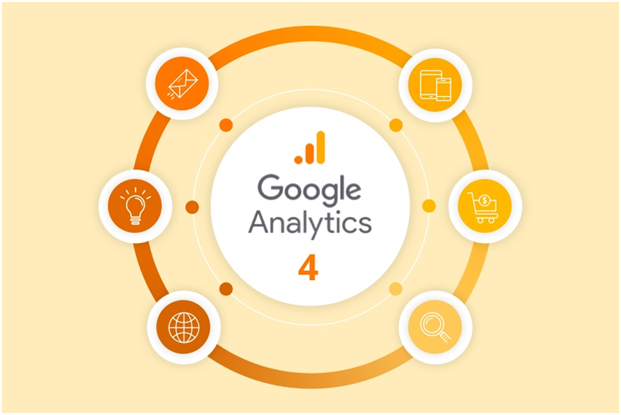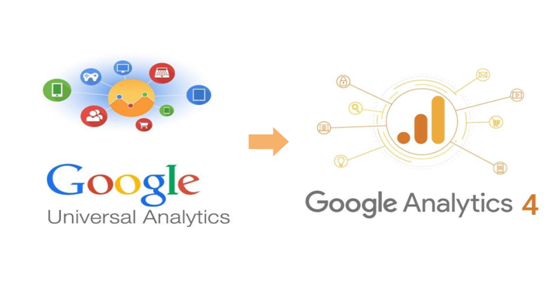- January 9, 2023
- admin
In today’s measurement landscape, businesses need to navigate new challenges to understand
Two and a half years ago, we introduced Google Analytics 4 to address these evolving measurement standards and help businesses succeed. Google Analytics 4 has the flexibility to measure many different kinds of data, delivering a strong analytics experience that’s designed for the future. It allows businesses to see unified user journeys across their websites and apps, use Google’s machine learning technology to surface and predict new insights, and most importantly, it’s built to keep up with a changing ecosystem.
Without a modern measurement solution, you leave essential insights on the table that can impact your business. So now is the time to make Google Analytics 4 your cross-platform Analytics solution. We will begin sunsetting Universal Analytics — the previous generation of Analytics — next year. All standard Universal Analytics properties will stop processing new hits on July 1, 2023. Given the new Analytics 360 experience was recently introduced, Universal Analytics 360 properties will receive an additional twelve months of new hit processing, ending on July 1, 2024.

What is Google Analytics 4?
GA4 is not simply a redesign of Universal Analytics (UA); it’s an entirely new product that can be installed in addition to your existing UA profile. That said, if you’re setting up GA for the first time, GA4 is the “latest version” that superseded UA as the default analytics platforms in October 2020. UA can still be installed, but GA4 is to be considered a Google Analytics update.
Previously, Analytics was divided between web properties (traditional Google Analytics) and Analytics for Firebase (to specifically cater to app needs). Perhaps most importantly, Google Analytics 4 seeks to set property owners up with flexible, yet powerful analytics tools within the bounds of cookieless tracking and consent management.
In other words: Google Analytics 4 is ready for the future, and the future is now.

Universal Analytics vs. Google Analytics 4
- Should Businesses Use Both Universal Analytics & GA4?
Absolutely—assuming you already have an existing Universal Analytics profile. GA4 implementation does not necessitate removing your existing GA setup. You’ll want to keep that in place for all that valuable historical data, with the insights you garner from GA4 working in complement with it.
If you are setting up Google Analytics for the first time, you can get started right away with GA4; there is no need to create a new, separate Universal Analytics profile, as those will sunset in July 2023.
A number of important changes have taken place in the evolution of GA4 and the growing restrictions around data privacy. A few key items that have changed—and not just for GA4, in some cases—include:
- IP Address logging
IP logging has been deprecated as a whole, and all processing for locations will happen and be passed through to GA. This meets GDPR requirements and ensures no compliance issues arise in the form of transferring PII (personally identifiable information)
- EU Data
Previously, EU data was being moved to the States to be processed. This practice has been deprecated, and all EU data is processed within the EU, which also ensures GDPR compliance
- Google Signals Regionality
Launched in 2018, Google Signals is a product that collects data for users who have opted into Ad Personalization. This data is anonymized and made available to integrate into reporting, audience building, and more. Google Signals can be disabled for specific regions (Countries, specifically), while included for others. There are a number of reasons this control is important; while not necessarily a GDPR requirement, it allows entire regions to not be a part of intake. Reasons for this are typically socioeconomic and/or political
- Granular Location and Device Data Collection
A number of data points including city, device information, browser versioning, and more were previously default. Some may prefer not to collect certain data points for the sake of being tighter on compliance risk. These previously default data points can now be specified regionally if they will be collected
New Features & Capabilities of GA4
Our GA language is changing. While the reasons we use GA data largely remain the same, the available data—and the best ways to answer the questions at hand—have evolved.
A number of metrics that we’ve grown accustomed to in Universal Analytics have either changed or deprecated and been replaced with something new. Let’s explore a few of the most important updates…
New metrics to track
Old user behavioral measurements are on the way out. Metrics including bounce rate and average session duration will no longer be available in GA4, requiring that we start using new metrics to understand behavior. These metrics include engagement rates and engaged sessions, which are more impactful in what they describe than previously available metrics.
Goals are out, Conversions are in
While largely a change in name, the taxonomy changes slightly due to the deprecation of the category/action/label hierarchy of previous events.
It’s important to note that GA4 will count every instance of a conversion event—even if it’s occurred multiple times in one session. For instance, if the same user fills out a form 3 times in one session, that conversion will be counted 3 times. Previously, Goals could only occur once per session.
Pageviews are out, Views are in
‘Views’ is used over ‘pageviews’ in GA4 due to the combined nature of web & app properties; ‘Views’ accounts for both screenviews and pageviews.
Repeated views of the same content are all counted, as always.
Session is out, Session Start is in
The definition of what creates a session has slightly changed; a session is now determined when a specific event ‘session start’ is triggered, which generates a session ID that is appended to each event that occurs within the session.
Sessions end after 30 minutes or the defined timeout period. Additionally, sessions no longer restart at midnight, or when new campaign parameters are encountered.
Bounce Rate (while still available) is out, Engagement Rate is in
Bounce Rate was always based on whether someone’s session duration was 0. Engagement Rate measures in the opposite direction, communicating what we were always truly looking to learn from Bounce Rate: What percentage of people are actually interacting with the site?
Average Session Duration is out, Average Engagement Time is in
While the two metrics are calculated differently, Average Engagement Time reports on what Average Session Duration was trying to touch on, but never quite got there: user focus on web or screenpages.
A different way to display data
Universal Analytics’ data model is hit-based, characterized by sessions and pageviews. Pageviews are essentially the key to the ignition, being the starting point of data collection for Universal Analytics. In GA4, this proverbial key is instead made up of events.
A Brief Overview of What to Expect with GA4
Over the last few years, we have seen Users and Sessions physically change places in GA. This subtle shift was a nod to the future, encouraging marketers to begin tracking towards users over session by session data.
This shift is fully realized in GA4. Event-based tracking over hit-based tracking allows for flexibility and granularity of data not previously possible. Old required categories, like Category/Action/Label, are deprecated, and all interactions with a website are ingested at the same level of granularity.
A pageview happens at the same level of detail as a link click—as scroll depth is tracked, as conversions are recorded. This level-setting allows for flexibility that would have been more limited, making the question less about what happened in a session, and more about the behavior of a user, and the translation of data points into human actions.
The Visible Rank is a full-service digital marketing agency that can work together with you to grow your business online.
Have a read through the results we are gaining for our clients here
We are always interested to hear where your biggest challenges lie and how we can help you solve them.
Drop us a line or chat to us today




